Back
Abhyanga Massage: Benefits, Oils, and How To Do It at Home
02/10/2025 | Written by Kate Tant
Live Vibrantly
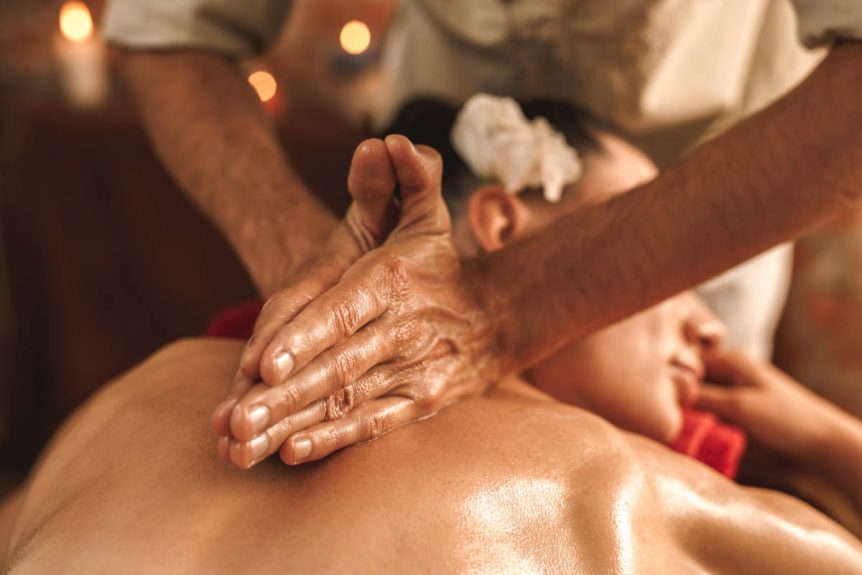
Abhyanga massage is a cornerstone of Ayurvedic practice. Originating thousands of years ago in India, it is deeply rooted in Ayurvedic wisdom and has been cherished as a vital part of daily self-care and healing rituals.
This ancient practice, mentioned in classical Ayurvedic texts like the Charaka Samhita, has been passed down through the generations as a means of maintaining balance and harmony in the body.
This self-care Ayurvedic massage is not just a physical treatment but a holistic experience that promotes balance and well-being. Whether you’re new to Ayurveda or seeking deeper insights, Abhyanga offers a transformative way to connect with your body and restore harmony.
Contents
- What is Abhyanga Massage?
- What is Shiro Abhyanga?
- Why Practice Self-Abhyanga?
- How to do Abhyanga Massage?
- Oils to Use
- Herbs to Use
- Benefits of Abhyanga Massage
- Contraindications
- Additional Tips
What Is Abhyanga Massage?
Abhyanga massage is an Ayurvedic massage that involves generously and rhythmically applying warm, herbal oils over the entire body. Unlike Western massage techniques, which primarily focus on muscles, Abhyanga massage emphasizes balancing the body’s energy—or doshas—to enhance overall health.
Abhyanga, performed daily or as part of a rejuvenation therapy, cleanses toxins, supports circulation, and deeply nourishes the skin. It is an integral component of Panchakarma, Ayurveda’s detoxification and rejuvenation process.
What Is Shiro Abhyanga?
Shiro Abhyanga is a special form of Abhyanga massage focusing on soothing the head, neck, and shoulders. This deeply relaxing treatment targets common stress points, relieving tension and promoting mental clarity.
The use of warm, medicated oils like sesame, coconut, or Brahmi-infused oils helps soothe the scalp, nourish the hair, and calm the mind. Shiro Abhyanga is particularly beneficial for individuals experiencing stress, tiredness, and difficulty with proper sinus drainage. It provides a relaxing effect while soothing the nervous system.
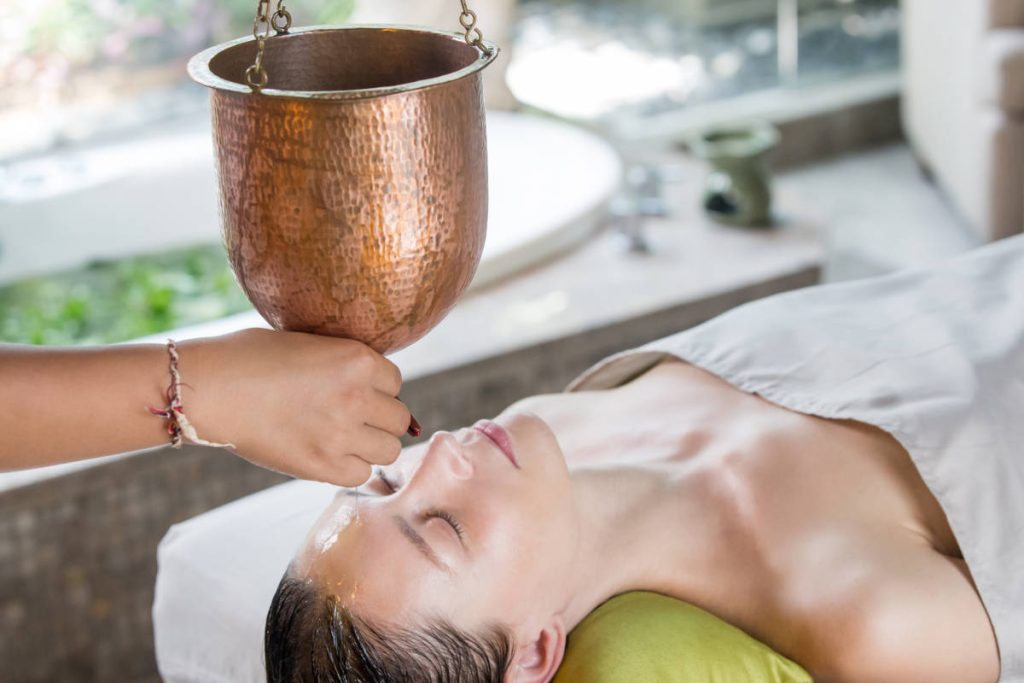
Why Practice Self-Abhyanga (Self-Massage)?
Self-Abhyanga is a powerful act of self-love and care. By dedicating time to this ancient practice, you’ll address your physical health while fostering a deeper connection with your inner spirit.
Our busy schedules often keep us from taking much-needed time to relax and unwind. But it’s important to incorporate self-massage into your routine. Some of the benefits of Abhyanga include:
- Balances Doshas: Abhyanga massage helps balance Vata, Pitta, and Kapha doshas, making it ideal for grounding and calming an overactive mind.
- Improves Circulation: The rhythmic strokes enhance blood flow, delivering oxygen and nutrients to tissues while aiding in lymphatic drainage.
- Detoxifies the Body: Regular practice supports the removal of toxins by enhancing lymphatic circulation and stimulating sweat glands, helping to flush impurities from the body. This leaves you feeling lighter and more energized.
- Boosts Immunity: The oils used in Abhyanga strengthen the skin’s barrier and fortify your immune system.
- Promotes Relaxation: This calming practice reduces stress, soothes the nervous system, and enhances sleep quality.
How To Do Abhyanga Massage
A trained Ayurvedic masseur understands the right massage strokes and oils for your body type. However, performing Abhyanga is simple and can be done in the comfort of your home.
You can indulge in this enjoyable self-care routine whenever it’s convenient for you. All you need is a few items and about 45 minutes of uninterrupted time.
Follow this step-by-step guide to self-Abhyanga:
- Choose Your Oil: Select a warm, dosha-specific oil (more on this below).
- Warm the Oil: Pour about ½ cup of oil into a clean squeeze bottle. Place the bottle in a pot of hot water until the oil is warm; not hot.
- Set the Mood: Find a quiet, warm space. Consider playing soothing music, lighting candles, and diffusing your favorite essential oils.
- Apply the Oil: Begin with your scalp, massaging in circular motions. Gradually work your way down the body from your forehead, ears, jaw, and chest to your trunk, arms, and legs. Use long strokes on limbs and circular strokes on joints.
- Massage the Abdomen: Move clockwise using gentle circular motions to support digestion.
- Focus on the Feet: Spend extra time on your feet, using firm pressure to ground yourself. Don’t forget your toes!
- Rest: Allow the oil to nourish and infuse into your skin for 10 to 20 minutes.
- Shower: Rinse off the oil with warm water or relax in a warm bath. Avoid using harsh soap; a gentle natural soap helps retain the oil’s benefits.
A few more things to consider:
- Use an old towel to catch any oil drips.
- Be sure to wipe the oil from your feet so you don’t slip.
- Use a clean towel after bathing.
For optimal results, do an Abhyanga massage daily. But if that’s not possible, consider making it a part of your weekly self-care routine.
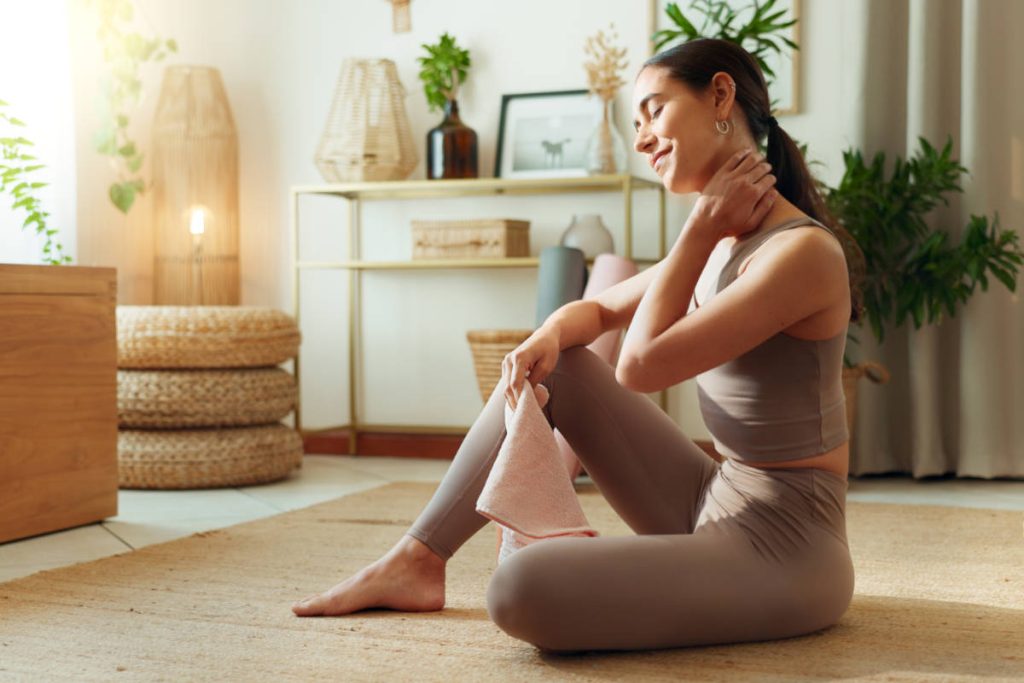
What Oils Are Best for Abhyanga Massage?
Choosing the right oil is crucial for maximizing the benefits of Abhyanga. If you’re unsure about your dosha, consider taking an online dosha quiz or consulting an Ayurvedic practitioner.
Your dosha is determined by physical traits, emotional tendencies, and overall constitution. Understanding your dosha can help you select the most suitable tool to align with your body’s unique needs.
While some oils are suitable for all doshas, others work best when tailored to your Ayurvedic constitution:
- Vata Dosha: Use warming and nourishing oils like sesame or almond oil.
- Pitta Dosha: Opt for cooling oils such as coconut or sunflower oil.
- Kapha Dosha: Choose lighter oils like mustard or safflower oil.
For a universal—or Tridoshic option, organic sesame oil is highly recommended due to its deeply grounding and nourishing properties.
What Herbs Are Best for Abhyanga Massage Oils?
Herbs and spices can enhance the therapeutic effects of Abhyanga. Below, you’ll find a few suggestions and a brief guide on how to infuse them into oils for a more practical approach:
- Ashwagandha: Strengthens and rejuvenates the body. To infuse, place dried Ashwagandha root or powder in a jar with your chosen base oil, such as sesame oil. Let it sit for two weeks in a warm, sunny spot, shaking occasionally.
- Brahmi: Clams the mind and enhances mental clarity. For infusion, gently heat the oil with dried Brahmi leaves for 30 minutes on low heat, then strain and store.
- Turmeric: Supports skin health and promotes a healthy inflammatory response. Mix Turmeric powder with oil, warm gently, and strain before use to avoid staining the skin.
- Neem: Detoxifies and purifies the skin. Combine Neem leaves with your base oil and heat on low for an hour, then strain.
These infused oils can elevate your Abhyanga practice, providing both therapeutic benefits and a calming sensory experience. These herbs can also be taken as supplements or tea infusions for added benefits.
Try our Turmeric Formula capsules for joint and mobility support. Or sip on a cup of Tulsi Turmeric Ginger tea for an energizing boost.
Our Neem capsules support immune function, promote healthy skin, and offer antioxidant properties.
Using a combination of supplements and warming teas with gentle Abhyanga massage extends the benefits of each holistic wellness method.
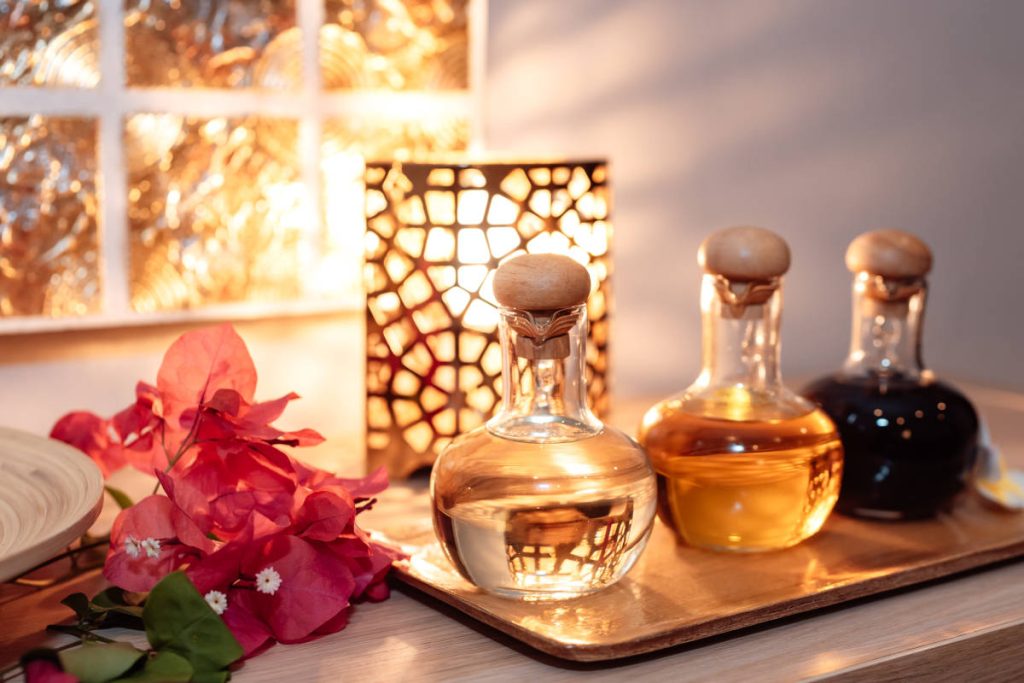
Benefits of Abhyanga Massage
The advantages of an Abhyanga Ayurvedic massage extend far beyond relaxation. Some of the most notable Abhyanga massage benefits are:
- Improved Skin Health: Regular oil massage hydrates the skin, reduces dryness, and enhances elasticity.
- Enhanced Mental Clarity: By calming the mind, Abhyanga supports focus and reduces stress.
- Reduced Fatigue: The nourishing oils and rhythmic movements invigorate the body, leaving you energized.
- Better Sleep: Abhyanga soothes the nervous system, promoting deeper and more restful sleep.
- Strengthened Joints and Muscles: The massage improves joint lubrication and muscle tone.
- Hormonal Balance: Regular practice may help regulate hormones, particularly in women.
Consider incorporating this oil massage treatment into your weekly holistic wellness routine. Before you start, take note of how you feel mentally, physically, and spiritually. After 30-60 days of consistent practice, reassess your wellness and notice where you’ve improved.
Who Shouldn’t Do Abhyanga?
While Abhyanga is safe for most people, there are certain situations where it’s best to avoid or modify the practice:
- Fever or Illness: Massage can exacerbate symptoms and interfere with the body’s natural healing process during acute illnesses or infections.
- Skin Conditions: Severe rashes, open wounds, or skin infections may become aggravated by the application of oil and friction from the massage.
- Pregnancy: Hormonal changes during pregnancy can make the body more sensitive. Additionally, Abhyanga can stimulate detoxification, which may negatively affect the baby. Always consult a qualified practitioner to ensure the safety of massage practices.
- Menstruation: Some Ayurvedic texts advise against Abhyanga during menstruation, as it is believed to increase Kapha and potentially disrupt the natural detoxification process.
Additional Tips for Practicing Abhyanga Massage
- Timing: The best time to practice Abhyanga is in the morning before you shower or bathe.
- Consistency: Aim to practice Abhyanga daily or at least three to four times a week for maximum benefits.
- Customization: Tailor your massage routine to suit your body’s needs and dosha balance.
Abhyanga is more than a massage; it’s a lifestyle practice that integrates physical health, mental clarity, and spiritual grounding. By incorporating this ancient Ayurvedic ritual into your wellness routine, you’ll experience Abhyanga massage benefits while cultivating a deeper sense of harmony and well-being.
To begin, consider consulting an Ayurvedic practitioner to tailor the practice to your needs and dosha. Alternatively, start with a simple self-Abhyanga routine to explore its benefits firsthand.
Don’t forget to balance your Abhyanga massage routine with natural and organic supplements from ORGANIC INDIA. A warm cup of Tulsi Breakfast Tea and an Ayurvedic oil massage is a blissful, yet energetic way to start your day.
Sources
- What Is Abhyanga? A Beginner’s Guide to Ayurvedic Massage
- The Art & Benefits of Abhyanga Massage
- Introduction to Panchakarma Treatment | The Ayurvedic Institute
- Ayurvedic head massage | Shiro abhyanga
- The 11 Best Herbs for Circulation: Your Go-to Guide – Organic India
- Pilot study investigating the effects of Ayurvedic Abhyanga massage on subjective stress experience – PubMed
- A prospective study on the effects of Ayurvedic massage in post-stroke patients – PMC
- https://www.banyanbotanicals.com/blogs/wellness/when-to-not-do-abhyanga-and-why?srsltid=AfmBOopJhvMW7Xxkqa0EU3DUbWOtQs-fr96kTmlAgMsPC-T_VSwEPyd_

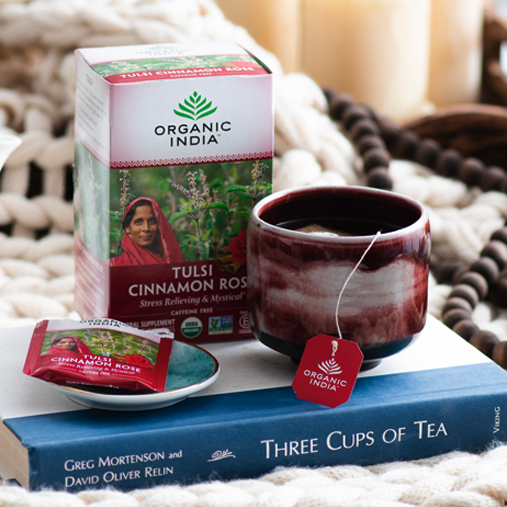
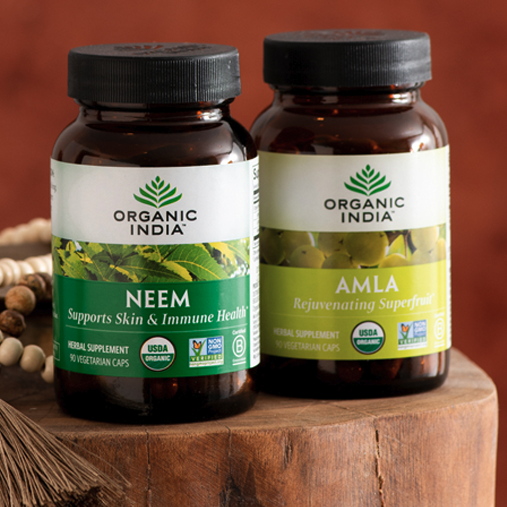

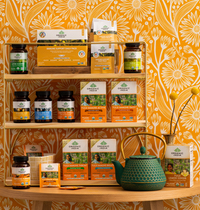


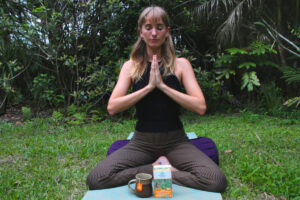
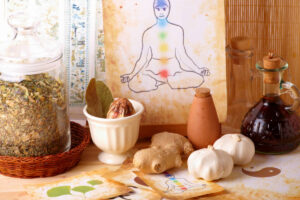
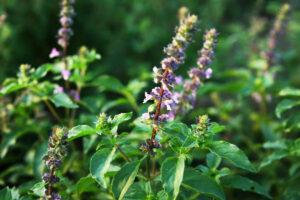
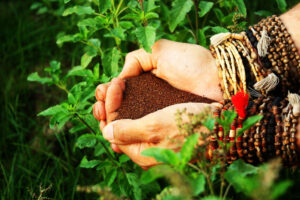


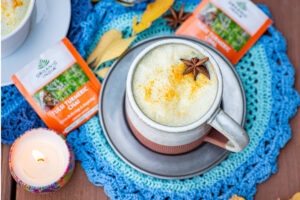

 Kate Tant is a professional health and wellness writer with a strong passion for holistic wellness. Her writing covers topics from Ayurvedic herbs and practices to nontoxic living and intermittent fasting. She is dedicated to helping and encouraging individuals seeking natural solutions to their health.
Kate Tant is a professional health and wellness writer with a strong passion for holistic wellness. Her writing covers topics from Ayurvedic herbs and practices to nontoxic living and intermittent fasting. She is dedicated to helping and encouraging individuals seeking natural solutions to their health.